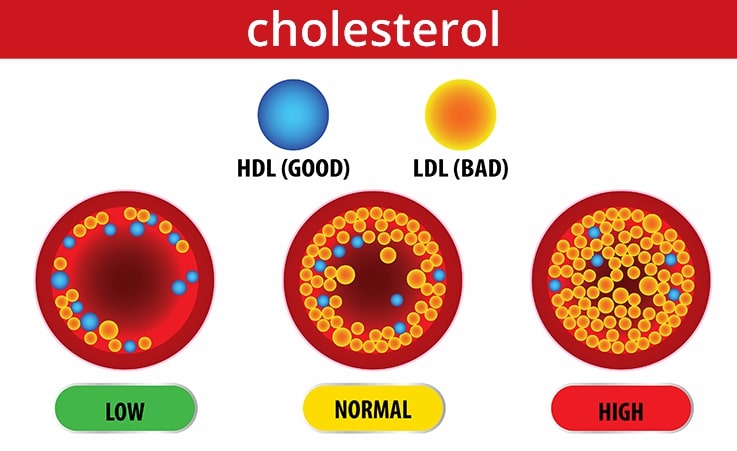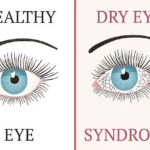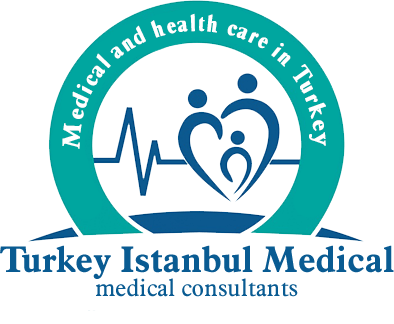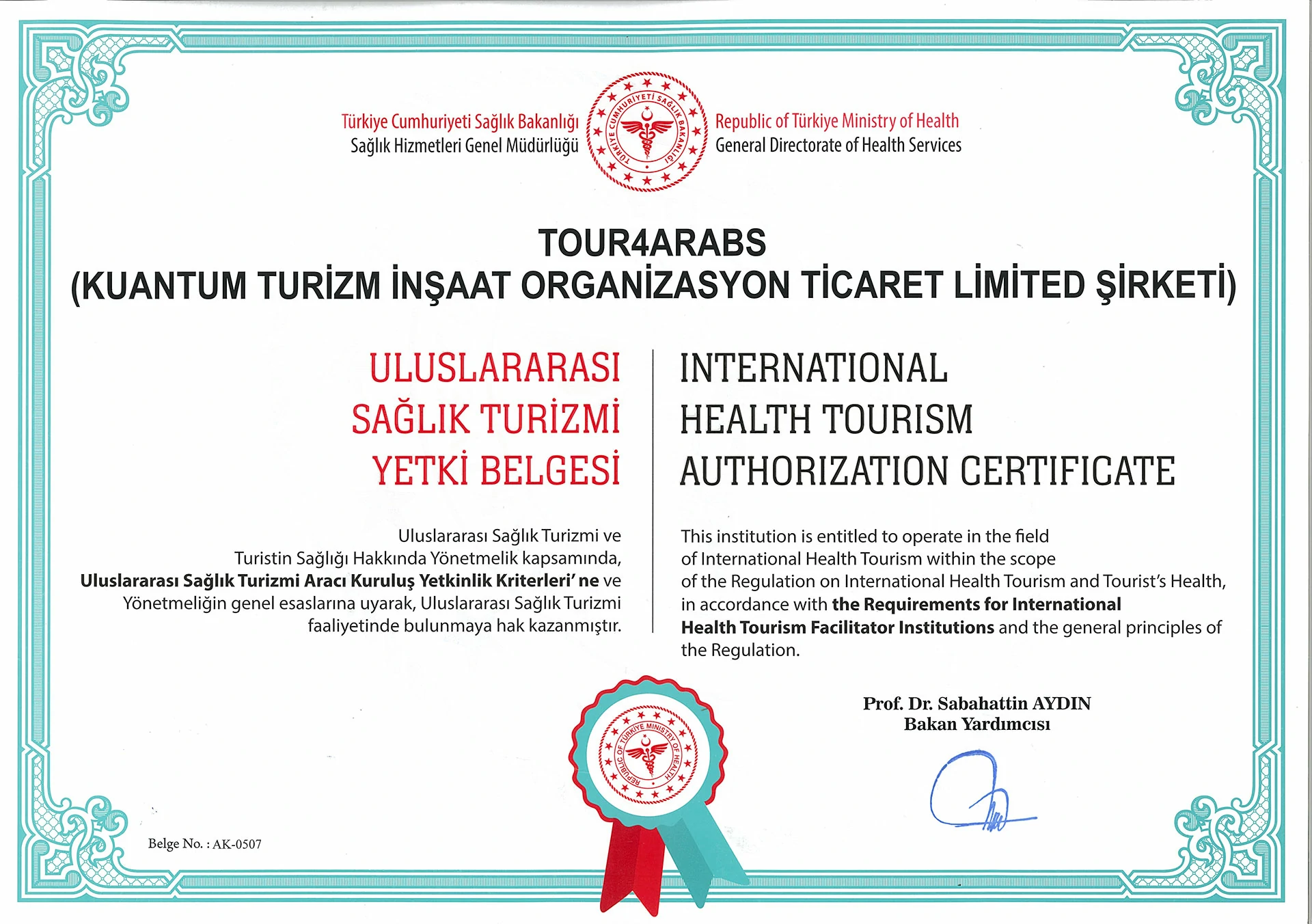10 Recommendations Against High Cholesterol
-
Prefer Healthy Fats.
Why:
Saturated fats activate the HMG – CoA reductase enzyme (The enzyme that controls cholesterol synthesis in the liver). This leads to more cholesterol production in the liver. And the excess LDL cholesterol in the blood cannot be cleaned.
Saturated fats can increase not only LDL, but also the proportion of small and dense LDL particles.
These particles penetrate the vascular wall more easily and are more atherogenic. (Causing Atherosclerosis).
Risk Increasers:
Trans Fats:
- Prepackaged products,
- Margarines,
- Junk foods,
- Chips,
- Fast food.
Saturated Fats:
- Butter,
- Processed meats (sausage, sausage, salami, etc.),
- Ice cream,
- Cream,
- Cheese (especially cheddar, kashar cheese, ezine, tulum, parmesan, white cheese),
- Fatty red meat,
- Full-fat dairy products,
- Chicken skin
Coconut Oil:
It has a high saturated fat content, mostly consisting of medium-chain fatty acids.
What to Do?
- Don’t cut fats completely; choose the right fats:
- Stay away from trans fats; don’t consume them.
- Reduce your saturated fat intake. Especially butter, tail fat, coconut oil and cream are the products with the highest saturated fat content.
- You may not need to cut butter and coconut oil completely, but don’t use them as your main cooking oil; try to use them in small amounts on special occasions or to add flavor.
- Prefer lean cuts of meat, consume in moderation.
- Avoid chicken/turkey skin; prefer breast.
- Prefer cottage cheese and kefir which are much lower in saturated fat and cholesterol.
- Eggs contain cholesterol. (370 mg/100g) but their saturated fat content is low (3.1 g), consume them in a balanced way without exaggeration.
- Prefer monounsaturated oils such as olive oil (especially cold pressed and early harvest), olives, walnuts, hazelnuts, almonds.
- Salmon (sea), sardines, mackerel, anchovies are rich in omega – 3. Fish can be oily but should not be fried, it should be baked or steamed.
- The benefits of olive oil come not only from lowering cholesterol, but also from the antioxidant and anti-inflammatory polyphenols it contains. To maximize this benefit, consume olive oil raw. (For example in salads).
- Some refined vegetable / seed oils such as corn oil, safflower oil, sunflower oil are associated with inflammation in the body.
- These oils undergo intense chemical processes (hexane solvent, bleaching, deodorization, etc.) to obtain them. Limit consumption of refined vegetable oils.
- Avoid excessive frying and roasting, especially avoid frying vegetables.
- Offal such as beef liver, beef brain, and shrimp are low in saturated fat but very high in cholesterol. Limit these foods if your LDL is high.
- Nuts are generally healthy foods and consuming one or two handfuls raw daily is beneficial.
-
Keep Your Blood Sugar Balanced
Why:
- White bread,
- Flour,
- Pasta,
- Pastry products,
- Sugary drinks
Foods containing refined carbohydrates, such as these, rapidly increase blood sugar.
This leads to insulin resistance over time. Insulin normally suppresses triglyceride production in the liver.
But when insulin resistance occurs, this pressure decreases. And the liver produces excess VLDL.
VLDL carries high amounts of triglycerides.
These also turn into LDL in the circulation over time.
At the same time, insulin resistance and high blood sugar increase the small and dense subtypes of LDL cholesterol (bad cholesterol).
These small particles enter the vascular wall more easily. And accelerate plaque formation.
Continuously high blood sugar can also lead to LDL oxidation. Oxidized LDL is targeted by the immune system, which triggers inflammation inside the vessels and accelerates atherosclerotic plaque formation. Vascular health is at serious risk.
What to Do?
- Reduce sugar and simple carbohydrates:
Very effective in lowering triglyceride levels.
- Turn to complex carbohydrates:
Vegetables such as oats, brown rice, sweet potatoes, carrots, etc., legumes such as lentils, chickpeas, and beans.
- Consume enough fiber. When fiber intake increases, a more balanced blood sugar pattern is formed in the intestines.
- Low glycemic index foods help with blood sugar and insulin balance.
- Eating too often causes unnecessary insulin fluctuations and problems such as not giving the digestive system enough time to cleanse itself. Open the gaps between meals and do not snack.
- Nighttime eating should be eliminated, and a meal plan should be established.
- Pay attention to portion control and the order in which you eat to prevent blood sugar spikes. Prioritize vegetables first, then protein and fat.
- Control your weight, especially reducing fat in the abdominal area makes a big difference.
Values to Follow
-
Fasting Blood Glucose:
70 – 99 mg/Dl
- HbA1C< 5.3% (optimal)
5.4 – 5.6% is considered moderately high.
Between 5.7 and 6.4, indicates prediabetes.
-
Overt Insulin:
2 – 5 μIU/ mL
Between 6-9 μU/ mL is early insulin resistance.
-
Waist Circumference:
Women <80 cm Men <94 cm.
-
Stay Active, Exercise Regularly
Why:
A sedentary lifestyle is an important factor that directly affects cholesterol levels.
Lack of Physical Activity:
- Lowers HDL (Good Cholesterol) levels. HDL collects excess cholesterol in the blood and carries it to the liver. Low HDL means that this cleaning system is weakened.
- Increases LDL (Bad Cholesterol) and triglyceride levels.
- This situation increases the risk of atherosclerosis.
- It can cause weight gain and fat. Especially fat in the abdominal area disrupts cholesterol metabolism.
- It increases insulin resistance and inflammation. This situation causes cholesterol particles to become more harmful.
What to Do?
Research shows that:
Certain types of exercise can improve blood fats and cholesterol levels by allowing the muscles to use fats from the blood more efficiently.
The Most Effective Exercises:
-
Aerobic Exercises (Cardio):
Includes activities such as running, swimming, walking, cycling.
-
Strength Training:
They are exercises aimed at strengthening the muscles.
Combining the two provides the highest benefit.
Exercise should be done at high intensity to lower cholesterol.
Walking is beneficial for general health, but it may not be enough to lower high cholesterol on its own.
-
For maximum benefit:
At least 5 days a week, 30-45 minutes of moderate-high intensity aerobic exercise (fast walking, cycling, swimming)
2-3 days a week of strength training (weights, resistance bands)
Consistency is very important! Doing exercises in a sustainable way brings the best results in the long term.
Be Careful Not to Be Inactive in Daily Life:
- If you work at a desk, get up and walk around for 5 minutes every 30-60 minutes; do desk exercises.
- Don’t drive short distances, walk.
- Start your day with 5-10 minutes of stretching and simple exercises after waking up in the morning.
- Use the stairs instead of the elevator.
- Leave your car far away when shopping.
- Instead of sitting on the phone, walk around the house.
- Stretch or do squats during commercial breaks.
- Turn on your favorite music and dance at home.
- Housework: Even sweeping, dusting, and cleaning windows can be considered low-intensity cardio!
-
Manage Your Stress
Why:
Chronic stress, is one of the often unnoticed causes of high cholesterol. When you are under stress, your body releases the hormone cortisol. Cholesterol is needed to produce cortisol. When stress continues for a long time, your liver starts producing more cholesterol. High cortisol triggers inflammation in the body – damaging your blood vessels.
This increases LDL cholesterol levels, making it easier for it to stick to your blood vessel walls.
If LDL oxidizes, this accelerates the blockage of your arteries.
At the same time, HDL cholesterol levels drop – your body can’t get rid of the excess cholesterol.
The Result:
Stress disrupts cholesterol balance and seriously compromises your cardiovascular health.
During stressful times, many people turn to “comfort foods” high in fat and refined sugar. These types of foods are directly linked to an increased risk of high cholesterol.
What to Do?
Reducing stress is important not only for your mental health, but also for your cholesterol and heart health.
Things you can do to manage stress:
- Meditation & deep breathing exercises
- A method that is good for you, such as yoga, tai chi, qigong
- Regular exercise
- Acquiring hobbies
- Socializing
- Spending time in nature
- Quality and sufficient sleep (7-8 hours)
- Enjoyable activities
Get professional support when necessary.
-
Be Friends with Soluble Fibers
Fiber consumption is the unsung hero of lowering cholesterol.
Soluble fibers (water soluble) in particular play a leading role in this effect.
It does this in 3 ways:
-
By Binding Bile Acids:
The liver produces bile acids from cholesterol. Fiber-rich foods, especially soluble fibers, bind these bile acids in the intestines and ensure that they are excreted in the feces. Thus, the liver has to spend more cholesterol to produce new bile. Thus, LDL cholesterol in the blood decreases.
-
Reduces Cholesterol Absorption:
Soluble fiber gels in the intestines and absorbs fats like a sponge, reducing the absorption of cholesterol and fats in our intestines. Thus, some of these fats are excreted by the body without being absorbed. This contributes to the decrease in LDL levels in the blood.
-
Indirect Effect on Intestinal Bacteria:
Fiber creates a prebiotic effect by feeding the beneficial bacteria living in the intestines. These bacteria produce short-chain fatty acids (SCFA: especially propionate). Propionate reduces the activity of the HMG-CoA reductase enzyme responsible for cholesterol synthesis in the liver. It also increases the conversion of cholesterol to bile acids in the liver. This conversion allows cholesterol to be converted to bile acids and eliminated from the body.
What to Do?
Aim to consume 25-30 grams of fiber per day.
At least 7-10 grams of this should be soluble fiber.
Sources of Soluble Fiber:
- Oats, oat bran
- Buckwheat
- Flaxseed, chia seeds
- Beans, lentils, chickpeas
- Carrots, broccoli, Jerusalem artichoke
- Brussels sprouts, red cabbage
- Apples, pears, oranges, peaches, apricots
- Psyllium, acacia fiber
- Dried figs, dried apricots, prunes
Includes foods such as.
More fiber = Lower LDL + Healthier intestines + Less inflammation.
A diet rich in fiber increases bowel movements (without diarrhea). This increases cholesterol loss through bile.
According to the Bristol stool chart, Type 3-4 is ideal.
Type 1-2 = constipation = more time for cholesterol to be reabsorbed.
Consuming organic fruits with their skins also provides an important source of fiber.
Don’t forget to consume enough water along with fiber.
-
Support Your Bile Health
Why:
Bile health is directly related to cholesterol levels.
-
Bile is One Way Cholesterol is Removed from the Body:
Excess cholesterol in the body is converted into bile acids by the liver. This bile is stored in the gallbladder. And it is released into the intestines after fatty meals.
Bile acids bind cholesterol along with the digestion of fats. And help to eliminate it through the stool. This is one of the main ways to prevent cholesterol from accumulating in the body.
-
Bile Re-circulation and Cholesterol Balance:
95% of bile acids are reabsorbed in the small intestine. And return to the liver (enterohepatic circulation).
This cycle allows bile to be used repeatedly. Some of the bile is excreted in the stool. And the body has to re-produce it. Thus, more cholesterol is used. As a result, LDL decreases.
What are The Dangerous Situations?
-
Slow or blocked bile flow
Cholesterol accumulates in the body.
-
Cholestasis (bile flow disorder)
Fat and cholesterol digestion is impaired.
-
Excess cholesterol in bile
Cholesterol precipitates and gallstones form.
-
If gallstones block the bile ducts
Digestion is impaired, cholesterol excretion stops.
High cholesterol is more common, especially in people with gallstones.
What to Do?
To reduce the risk of gallstones and improve bile flow:
- Increase fiber consumption: Especially soluble fibers (oats, flaxseed, kidney beans, legumes, chia, psyllium).
- Binds bile acids, prevents their absorption from the intestines – the body uses more cholesterol to produce new bile.
- Healthy oils such as olive oil stimulate bile release – digestion is supported, bile stagnation is reduced. The right oils should be preferred.
- Foods such as artichoke, turmeric, dandelion, beetroot increase bile production and flow.
- Drinking enough water is essential for bile fluidity.
- Consume bitter vegetables such as arugula, watercress, radish, and dandelion, which support bile flow.
- Supplements such as milk thistle, choline, taurine, glycine, betaine digestive enzymes, and bile salts can help with bile problems. You can benefit from supplements by consulting your doctor.
-
Support Your Gut Health
Why:
The intestines play a vital role not only in digestion but also in cholesterol metabolism.
A healthy gut flora (microbiota) directly affects the absorption, transformation and excretion of cholesterol.
-
Cholesterol is absorbed from the intestines and mixed into the blood.
A healthy gut flora can reduce this absorption rate. In addition, some gut bacteria increase the excretion of cholesterol by breaking down bile acids.
-
Gut bacteria convert bile acids, allowing the liver to produce more bile.
This leads to more cholesterol being used.
-
Healthy bacteria that feed on fiber, acetate, butyrate and propionate, reduce cholesterol synthesis in the liver.
Propionate in particular reduces cholesterol synthesis in the liver.
-
Healthy guts protect heart health by reducing inflammation.
An unhealthy gut means increased permeability and systemic inflammation. Inflammation facilitates the adhesion of LDL cholesterol to the vessel walls and atherosclerosis.
Which Situations Are Dangerous?
-
Dysbiosis (Increase in Harmful Bacteria)
Cholesterol absorption increases, inflammation is triggered.
-
Constipation
Bile excretion decreases, cholesterol can be reabsorbed in the intestine.
-
Antibiotic use
Reduces beneficial bacteria, disrupts lipid balance.
What to Do?
To improve intestinal health:
High-sugar and processed products increase harmful bacteria; disrupt microbiota balance. Avoiding these is essential for both cholesterol balance and intestinal health.
Consuming naturally fermented foods rich in probiotics (such as yogurt, kefir, sauerkraut, kombucha, natto) and plant foods with high fiber content is important to support intestinal health and maintain cholesterol balance.
In addition, avoiding unnecessary antibiotic use helps maintain microbiome balance.
Lactobacillus and Bifidobacterium species such as Lactobacillus reuteri, Lactobacillus plantarum, Lactobacillus acidophilus, Lactobacillus rhamnosus, Bifidobacterium longum facilitate the excretion of cholesterol by breaking down bile salts.
It is important to take these bacteria with prebiotics (fibers) for them to be effective. (e.g. inulin, chicory, resistant starch).
-
Optimize hormones that decline with menopause.
Why:
Heart attack and stroke are the leading causes of death in women over the age of 50.
- Since estrogen levels drop with menopause, estrogen loses its protective effects on the vessels, and after this period, women’s cholesterol levels and heart disease risk increase.
- In addition, estrogen supports the processing of cholesterol in the liver and its conversion to bile acids. When it decreases, this process slows down and cholesterol can stay in the blood for a long time.
- Fat accumulation increases especially around the abdomen after menopause. This type of fat causes insulin resistance and metabolic problems, worsening the cholesterol profile.
- Another important factor in the increase in cholesterol during menopause is inflammation. Inflammation can lead to cholesterol accumulation. It also changes existing cholesterol and makes it oxidized.
What to Do?
Awareness of the relationship between menopause and high cholesterol should be increased. Although the symptoms of menopause such as hot flashes, night sweats, and insomnia are well known, very few women know that menopause can be associated with high cholesterol. Bioequivalent estrogen and progesterone replacement can be planned for suitable women. Healthy liver and intestinal health are very important when taking HRT.
-
Optimize thyroid function.
Why:
Thyroid hormones (especially T3 and T4) play a vital role in cholesterol metabolism.
- Thyroid hormones increase the production of LDL receptors in the liver. This allows LDL cholesterol to be cleared from the blood.! In hypothyroidism (when the thyroid is working slowly), these receptors in the liver are reduced. As a result, LDL cholesterol circulates in the blood for longer, which leads to increased blood LDL cholesterol levels.
- When metabolism slows down, cholesterol absorption from the intestines increases. Even if you reduce cholesterol in your diet, your body tries to take in more – which can have the opposite effect.
- Thyroid hormones convert cholesterol into bile acids. In hypothyroidism, this conversion slows down – cholesterol accumulates in the body.
- Due to the slowed metabolism, the breakdown of triglycerides also decreases, which can increase blood triglyceride levels.
What to Do?
- If your cholesterol is high, definitely have your thyroid functions checked: TSH, Free T4, Free T3, Anti-TPO, Anti-Tg
- If TSH is high and T4 is low – it may be hypothyroidism.
- Using levothyroxine (T4 hormone) with a doctor’s recommendation also positively affects cholesterol levels.
- It is also important to complete deficient vitamins and minerals (e.g. Selenium, zinc, vitamin D, iron, B12, etc.).
-
Get Support from Useful Supplements
Berberine:
Mechanism of Action:
Increases the amount of LDL receptors in the liver; reduces their destruction. Thus, it allows cells to take LDL from the blood more effectively. Accelerates LDL clearance. This reduces LDL levels in the blood. It also indirectly supports lipid metabolism by positively changing the intestinal flora.
The most commonly used form is Berberine HCI.
500-1,000 mg per day is the commonly used dose.
Clinical Effects (From Studies):
- Can reduce LDL cholesterol by 20%.
- Reduces total cholesterol and triglycerides.
- Provides a slight increase in HDL cholesterol.
- Effects take about 3 months to be seen.
OMEGA – 3
Mechanism of Action:
- Suppresses triglyceride synthesis and decreases triglyceride production in the liver. Less VLDL – can also indirectly reduce LDL.
- Omega – 3s suppress inflammatory cytokines such as IL – 6, TNF – a with their anti-inflammatory effects – vascular health is protected. Improves endothelial function. Increases arterial flexibility.
- 2,000 – 3,000 mg EPA / DHA per day.
These lifestyle changes can have very positive effects on your cholesterol levels and cardiovascular health.
However, especially:
- If you have a history of cardiovascular disease,
- If you have a family history (heart attack, etc.)
- And if your cholesterol level is quite high,
- If your doctor has prescribed medication,
It is important to consult your own doctor.
Also, focusing only on LDL and HDL cholesterol levels can be misleading.
For a more accurate assessment:
Apo B Measurement:
It is a more reliable indicator in determining cholesterol risk.
As a Result:
- Blood pressure,
- Diabetes,
- Insulin resistance,
- Inflammation
A personalized assessment that takes these values into consideration along with other risk factors is the healthiest approach.
Cholesterol is an individual balance and does not depend solely on nutrition.
- Many factors such as genetic inheritance,
- Lifestyle,
- Hormonal status
- and health history
affect this balance.
The blood cholesterol levels of two people with the same diet can be quite different from each other. This is because there are many biological processes and environmental factors that affect cholesterol in the body.
Some of these are:
- How much cholesterol the liver produces,
- How effectively LDL cholesterol can be cleared,
- And how much cholesterol taken in with food can be absorbed,
- How much cholesterol excreted through bile is reabsorbed (enterohepatic circulation)
- Smoking and alcohol use
- Thyroid hormone status (especially hypothyroidism)
- Hormonal changes (e.g. menopause)
- Physical activity level and exercise habits
- Stress management skills
- The richness of intestinal flora, etc.
All of these factors can directly affect the LDL, HDL and triglyceride levels in a person’s blood. Therefore, when evaluating cholesterol, not only “what we eat” but also all of these factors are of great importance.






